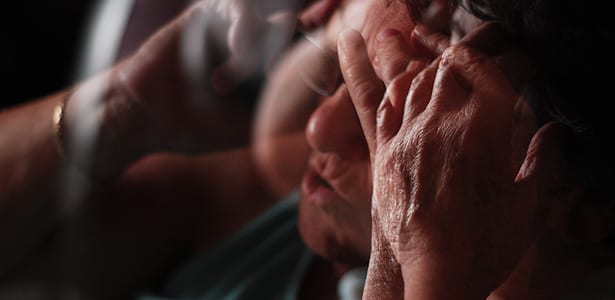Science journalist Hans Villarica wrote about the groundbreaking panic attack research of SMU psychologists Dr. Alicia Meuret, Dr. David Rosenfield and Dr. Thomas Ritz in the The Atlantic.
The Sept. 16 article “The Upside of a Panic Attack: The Worst Is Over Before You Know It” details the startling findings of Meuret’s newest published study showing significant physiological instability in advance of so-called out-of-the-blue panic attacks.
EXCERPT:
By Hans Villarica
The Atlantic
There are plenty of misperceptions about panic attacks. People often tell the anxiety ridden to “take a deep breath,” for instance, when they may actually already be taking too much oxygen in by hyperventilating. Indeed, what experts say is that breathing should instead be slow, shallow, and regular, so that a constant, very small stream of air comes in through the nose. Paper bags are optional too, as cupped hands do the trick just as well.New research aims to debunk another myth: Panic attacks occur completely out of the blue. Though those who panic don’t realize it, their attacks are in fact foreshadowed by minute physiological signals, according to a study led by Southern Methodist University’s Alicia Meuret in the journal Biological Psychiatry. “The hour before panic onset was marked by subtle but significant waves of changes in patient’s breathing and cardiac activity, not just the moment of onset of the attack or even during the attack,” she says. “Our analysis provided us with a whole different pattern.”
That pattern goes like this: Physiological instabilities occur in repeated bouts or waves and are often initiated by heart rate accelerations, followed by changes in breathing and carbon dioxide levels. Ultimately, breathing becomes much shallower, causing a spike in carbon dioxide levels that lead to symptoms that could no longer escape the attention of those who panic. More precisely, they experience terrifying sensations, such as dizziness, air hunger, and shortness of breath.
SMU is a nationally ranked private university in Dallas founded 100 years ago. Today, SMU enrolls nearly 11,000 students who benefit from the academic opportunities and international reach of seven degree-granting schools. For more information see www.smu.edu.
SMU has an uplink facility located on campus for live TV, radio, or online interviews. To speak with an SMU expert or book an SMU guest in the studio, call SMU News & Communications at 214-768-7650.





